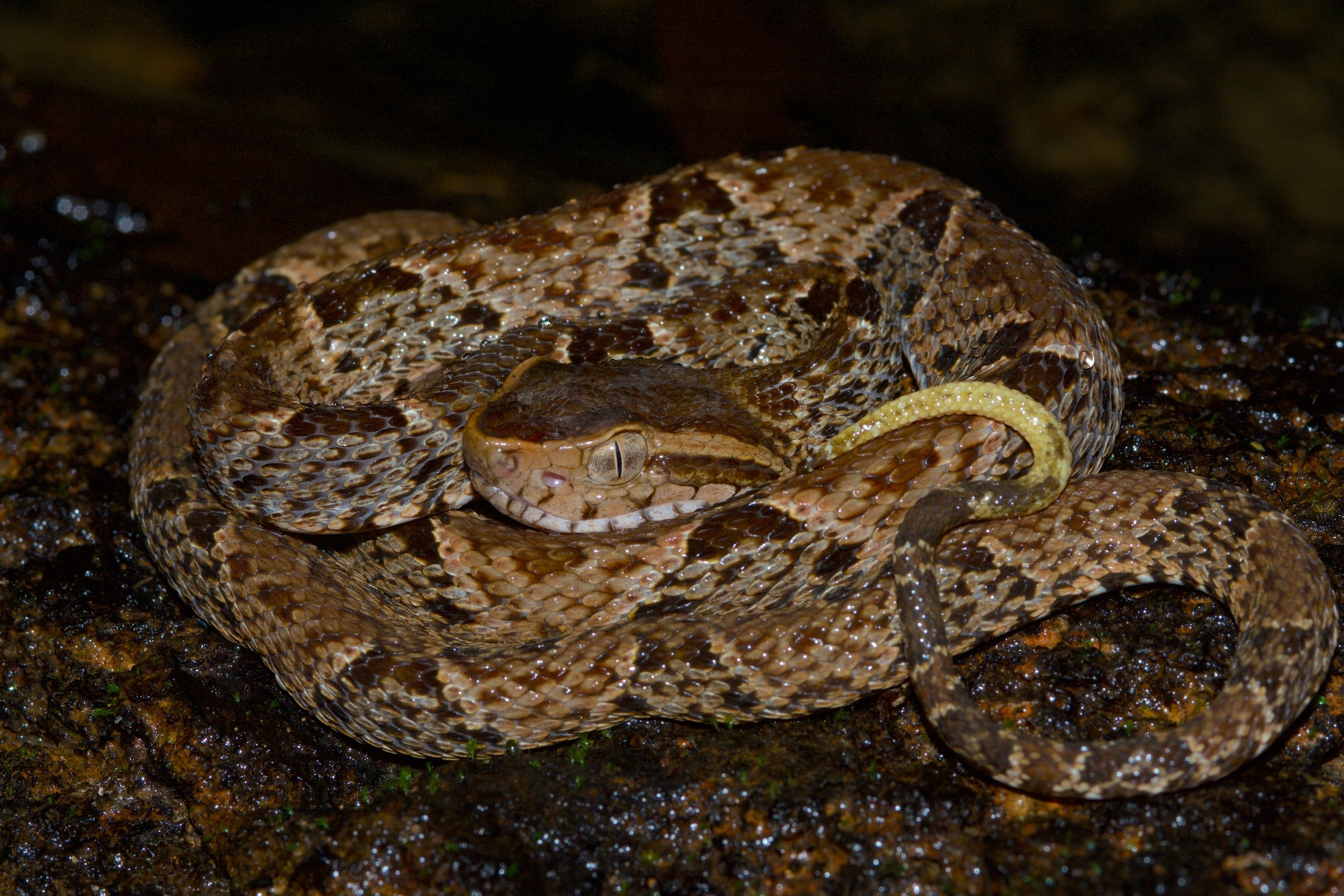Barnett's lancehead
(Bothrops barnetti)

Description
Bothrops barnetti, also known commonly as Barnett's lancehead and Barnett's pit viper, is a species of venomous snake, a pit viper in the subfamily Crotalinae of the family Viperidae. The species is endemic to Peru. There are no subspecies that are recognized as being valid. B. barnetti is patterned in white and black triangles. Males usually grow to 120 cm (47 inches) in total length (including tail), whereas females are quite smaller and thinner. The body is heavily shaped and stocky. English common names for B. barnetti are Barnett's lancehead and Barnett's pit viper. In Peru it is referred to as cascabel, cascabel falso, macanche, sancarranca, and zancarranca. The specific name, barnetti, is in honor of Burgess Barnett (1888–1944), who collected the holotype and paratypes. Dr. Barnett was Curator of Reptiles at the London Zoo (1932–1937) and Superintendent of the Rangoon Zoological Gardens (1938–1944). B. barnetti is found along the Pacific coast of northern Peru. It occurs at low elevations in arid, tropical scrub. The type locality given is "from the mouths of Quebradas Honda and Perines, between Lobitos and Talara, northern Peru". Bothrops is a genus of highly venomous pit vipers endemic to Central and South America. The generic name, Bothrops, is derived from the Greek words βόθρος, bothros, meaning "pit", and ώπς, ops, meaning "eye" or "face", together an allusion to the heat-sensitive loreal pit organs. Members of this genus are responsible for more human deaths in the Americas than any other group of venomous snakes. Currently, 45 species are recognized. These snakes range from small, never growing to more than 50–70 cm (19.5–27.5 in), to large at over 200 cm (6.6 ft) in total length. Most are characterized by having a sharp canthus rostralis and an unelevated snout. The arrangement of the scales on top of the head is extremely variable; the number of interorbital scales may be 3–14. Usually there are 7-9 supralabials and 9-11 sublabials. There are 21-29 rows of dorsal scales at midbody, 139-240 ventral scales, and 30-86 subcaudals, which are generally divided. Lacépède originally applied the name "lanceheads" to all of these snakes, which he considered conspecific. Thus, older writings, as well as popular and sometimes scientific writings (including the American Heritage, Merriam-Webster, and New Shorter Oxford dictionaries), still often call them fer-de-lance (French, "spearhead").
Taxonomic tree:







